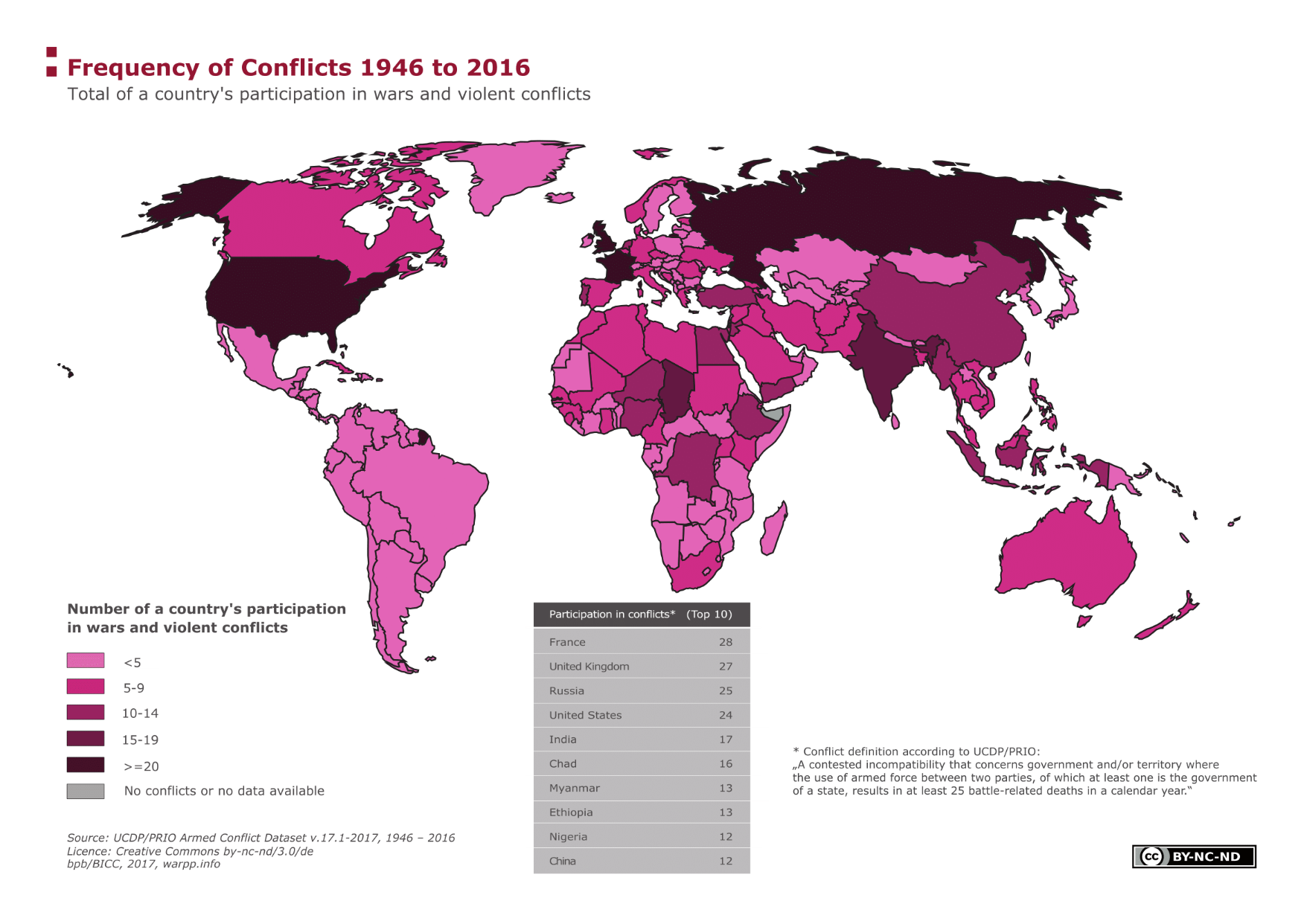Frequency of Conflicts 1946 to 2016

The graph shows the total number of wars and violent conflicts a country was involved in from 1946 to 2016. The colour shade differs according to the frequency of its involvement; the conflict location is of no consequence for this. The darker the shade, the more often a country was involved in wars and violent conflicts. For countries represented by a shade of grey, either no data on their involvement in conflicts are available, or the countries were not involved in any conflicts.
Facts
The graph shows that virtually the entire world was affected by violent conflicts in the past 60 years; the majority of countries, however, was involved in less than five violent conflicts and wars. South America is the region with the least wars and violent conflicts. Overall, the distribution of conflicts and their frequency across the world is quite equal. The five countries that were most involved in violent conflicts are France (28), the United Kingdom (27), Russia (25), the United States (24) and India (17).
To interpret the graph, it is important to know that the frequency of conflicts does not give any information on the intensity of a war or violent conflict, i.e. the number of victims or refugees resulting from such a conflict. This, in turn, means that countries represented by a light shade are indeed involved in fewer conflicts some or all of which may be particularly violent.
Terms, notes on methodology or reading aids
A violent conflict is a contested difference of opinion regarding the government or/and territory in which two parties (at least one being a state government) use weapons, the use of which results in at least 25 battle-related deaths per year.
Today, wars are hardly formally declared. It is true that states are often involved, however recently, so-called asymmetric wars, that is violent conflicts between two adversaries that are unequal in their capacities and resources, have increased.
Data sources
UCDP (Uppsala Conflict Data Program) and PRIO (Peace Research Institute Oslo) UCDP and PRIO publish the Armed Conflict Dataset and the Battle-Related Deaths Dataset on an annual basis. These were combined to localize wars and conflicts. The definition of war the dataset is based on only considers wars or conflicts with the participation of at least one state and in which more than 25 persons have died as a result of armed fighting Wars were grouped according to extra-state / extra systemic violent conflicts (state against a non-state actor outside of existing borders), interstate wars (between two states), intra-state (state against a non-state actor within existing borders) and internationalized intra-state conflicts (state with the help of other states against a non-state actor within existing borders).
-
UCDP (Uppsala Conflict Data Program) - Armed Conflict Dataset
-
UCDP (Uppsala Conflict Data Program) - Battle-Related Deaths Dataset
-
PRIO (Peace Research Institute Oslo) - Armed Conflict Dataset
-
PRIO (Peace Research Institute Oslo) - Battle-Related Deaths Dataset
BICC 09/2016





